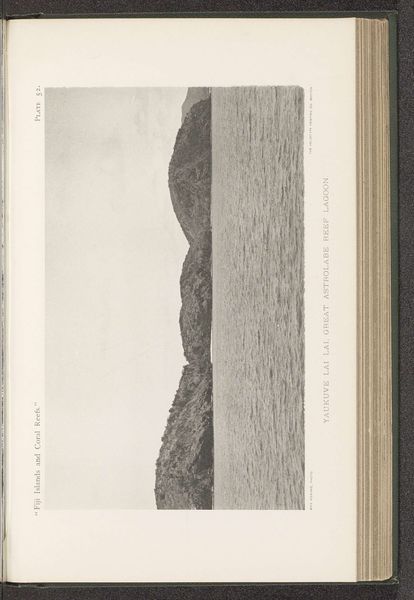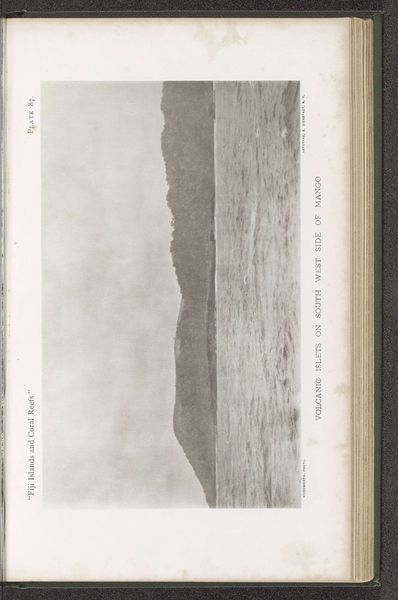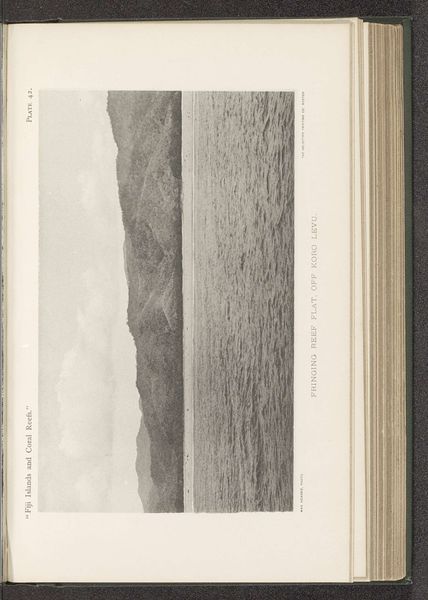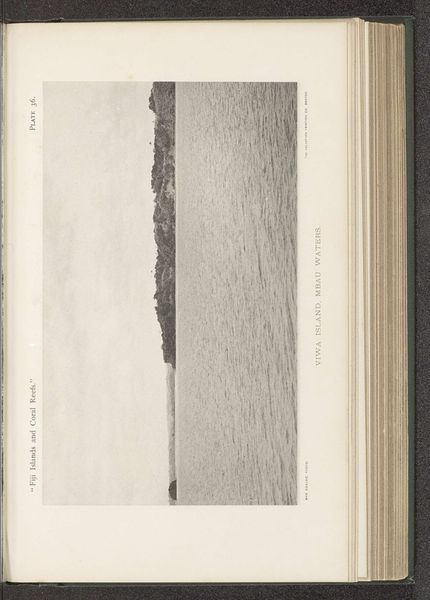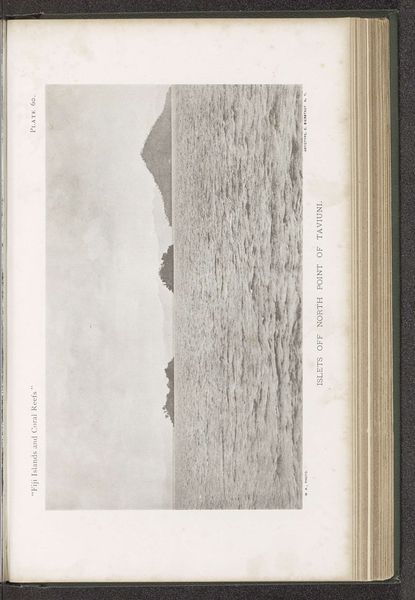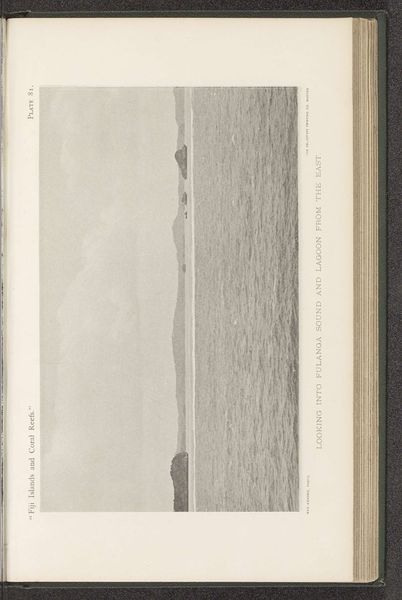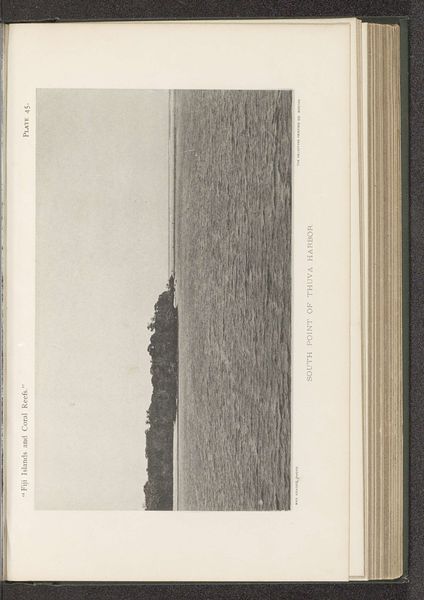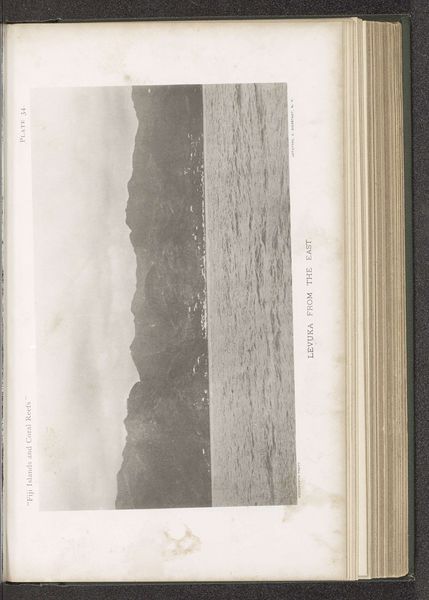
print, photography, gelatin-silver-print
# print
#
landscape
#
photography
#
ocean
#
gelatin-silver-print
Dimensions: height 108 mm, width 179 mm
Copyright: Rijks Museum: Open Domain
Curator: This is "Gezicht op een kraterbekken in de zee bij Totoya", or "View of a crater basin in the sea near Totoya," taken before 1899 by Maximilian Agassiz. It’s a gelatin silver print. What are your initial thoughts? Editor: It evokes a sense of isolation and immensity, like peering into another world. The stark contrasts of light and shadow, the way the mountains seem to guard the entrance, make it feel both inviting and forbidding. There's a quiet drama in its simplicity. Curator: That duality is compelling. The volcanic crater transformed into a seascape carries significant weight. Volcanos represent creation and destruction, a kind of world womb, with an opening to the sea perhaps symbolizing both vulnerability and resilience of island nations in the face of geological and climate forces. Editor: Absolutely. Thinking about the colonial context, this image, produced for Western consumption, frames the landscape as something to be observed, studied, even possessed. Whose gaze are we invited to adopt? Are we meant to marvel at its sublime beauty or consider the human stories that are both present and erased here? The very act of naming it a 'crater basin' turns a lived-in place into a geological spectacle. Curator: A valid point. Western science classified and quantified; meanwhile local stories are submerged or lost in the process. Coral reefs also feature; in many Pacific Island cultures, reefs carry deep symbolic significance, representing lineage, protection, and interconnection. This view flattens this rich significance into an abstract pattern, a mere backdrop to the geological wonder. Editor: We must remember the history behind photography; from the earliest portraiture used to colonize other populations to this very work of landscape depiction. Even "natural" scenes like these can perpetuate narratives that serve particular power structures. The choice of black and white strips the image of the vibrancy of the location, suggesting a detachment on the photographer’s part. Curator: These are difficult waters to navigate, even for us. In the end, to interpret any image requires a commitment to honoring that multiplicity of vision and knowledge, refusing singular answers to questions better left open. Editor: Agreed. By unsettling conventional interpretations of beauty, we’re hopefully nudging ourselves to reflect on our own complicity in shaping perceptions and driving discussions on representation.
Comments
No comments
Be the first to comment and join the conversation on the ultimate creative platform.



